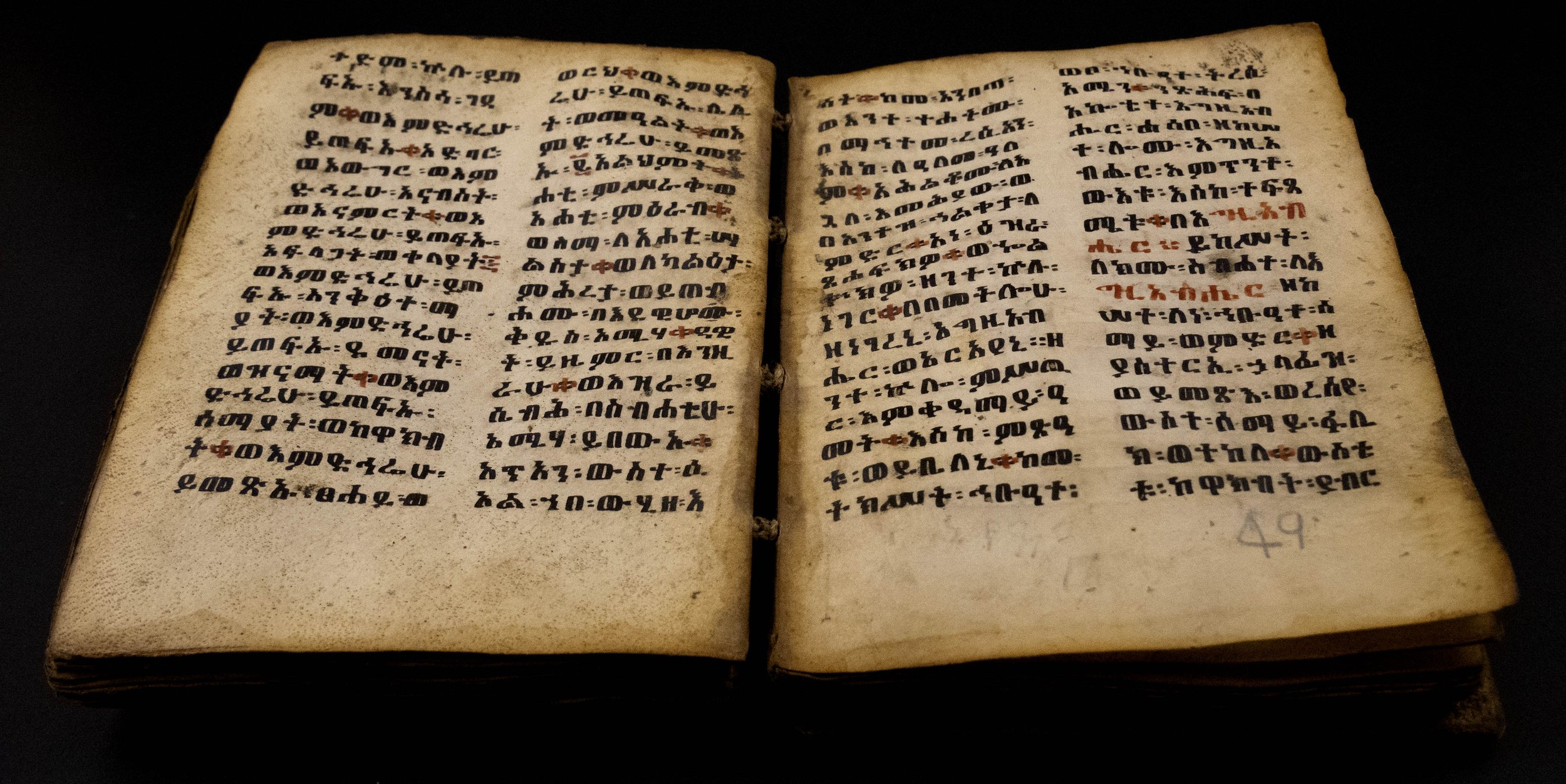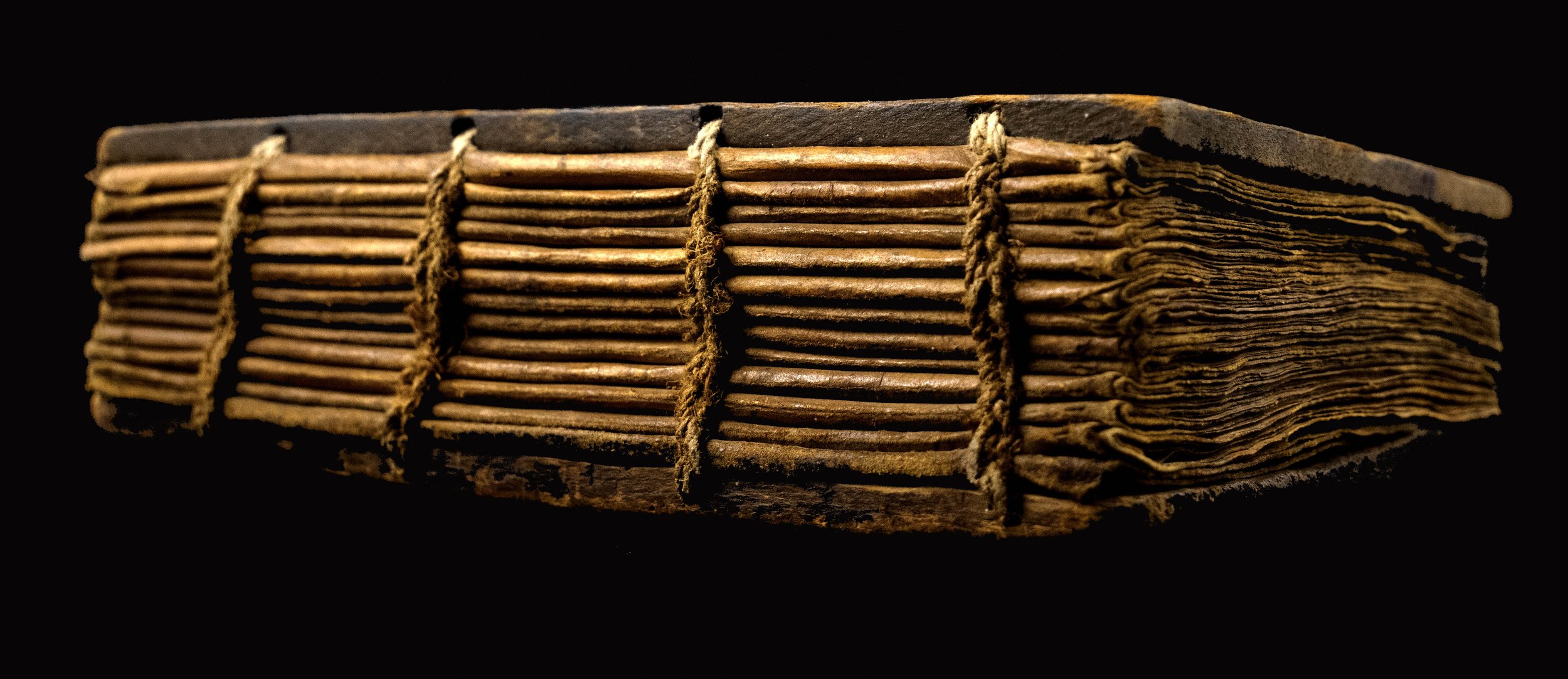Liturgy of the Seventh Sabbath
(Ethiopia : bound manuscript, c. 1750 - c. 1850)
-
This handwritten manuscript is the Liturgy of the Seventh Sabbath, a book of prayers focusing specifically on those conceived for the eponymous festival observed solely by the Betä Israel, as well as those for the Sabbath of Sabbaths, a major holiday. It is composed in Ge’ez, the Ethiopian church’s liturgical language. Until the 14th century, Ge’ez was also a spoken language, but was ultimately supplanted by Amharic throughout the region known as the Horn of Africa. However, Amharic, Tigrinya, Tigre and other Semitic Ethiopian languages still utilize Ge’ez script, written from left to right. The Liturgy incorporates some Hebrew words, among them all of God’s names and “Torah” (referring specifically to the Pentateuch). These words also appear in other Betä Israel-originated works.
To the Betä Israel, in both literature and religious practice, the Sabbath is given all-encompassing importance above and beyond any other text or ritual. In Ethiopian tradition, both Jewish and Christian sources see the Sabbath as a female figure who operates as an intermediary between God and those faithful to him, particularly in seeking mercy. In particular, the Betä regard it as a gift from God to Israel and thus to them. In the Sabbath texts, therefore, Moses’ relationship with God is also spotlighted, since it is him to whom God describes the Sabbath’s rituals.
The Seventh Sabbath, an annual celebration, was most likely observed on the 4th Sabbath of the 5th month. Less elaborate versions also took place every 7th Sabbath, as well as on the Jubilee Sabbath, held every 49th Sabbath. While described in the Liturgy as a “vigil”, held on rotation in different villages where priests came together, it was in fact joyful. In the prayer-house, an uplifting mood prevailed as prayers were recited through the night and the Sabbath until sunset, ending in the morning with beer-drinking and dancing.
The Liturgy is relatively unique amongst Betä Israel religious texts, in that there are no apparent analogs to any Ethiopian Orthodox Church writings. Many Betä Israel works have parallel Christian texts, but this is not the case with the Seventh Sabbath.
-
Despite our research and consultation with scholarly resources and experts on this work, we cannot determine a precise date that our copy of the Liturgy was written. Best estimates range from the mid-18th to mid-19th century. Measuring 15.5 x 11.5 x 4.5 cm, this manuscript comprises many features that set it apart from the rest of our collection and make it one of its rarest volumes.
Its front cover board is hardwood, and despite minor bug damage, is clearly the original. The smooth, possibly waxed or polished outer surface differs from the rough, chisel-marked inside surface. No writing is present on it or the 1st leaf recto. Although the handwriting begins on the 1st leaf verso, two factors indicate it – and the following leaf – does not belong to the work proper: both leaves are written in black and blue pen, and bear no foliation markings. However, it is difficult to determine if they are an interpolation or merely an attempt at rewriting faded text.
The work itself begins on the 3rd leaf, inscribed in two columns of black and red ink. A geometric, black and red-inked decoration runs across the page’s top. Beneath each line, there is scoring visible which ensured the scribe’s lettering would remain straight. Similarly, scoring between both columns marked out the margin. In its bottom right-hand corner, a “1” has been drawn in pencil; this foliation continues throughout the work, ending on the final, 90th leaf. There is no blank or interpolated leaf at the work’s end. Considerable water damage, evident along the last leaf’s bottom and outer edges, is present in all other pages, though most of the text remains visible; the exception being the final folio’s recto, which is much darker than the rest with the majority of its ink worn away. Beyond that, barring minimal wormholes, our copy exhibits very little damage because the leaves are vellum — most likely goat skin – which is robust and withstands handling far better than paper.
Several curiosities appear on various folios. On the verso of folios 78 and 82, and the recto of folio 82, a handful of words were painted out in either red or black ink — apparently with deliberate intent to obfuscate. This contrasts with folios 9 and 10, on which similar ink damage obscures some text. Folio 28 has been torn, but stitched closed with what feels like an animal hair; while folios 21 and 22’s tearing appear to have been mended with twine. The last folio’s recto does appear to have been stamped at some point with a mostly faded circular stamp, and someone wrote on it in black pen along the bottom, but much of it has been scraped away. While the language of what remains cannot be identified with any certainty, it does not appear to be Ge’ez.
Excluding the 2 frontal leaves, the book consists of 11 gatherings of 8 leaves, with a gathering of 2 leaves just before the final gathering. 2 of the folios have been cut out, apparently due to a correction of error, as though there is writing visible along the cut edge of the 1st leaf’s verso, there is none on its recto or on the other leaf.
The back cover board is composed of pressboard rather than the front cover’s solid hardwood.
Both are affixed on either side using twine, using Coptic stitching – a binding method particular to the area. Holes have been bored into the boards’ edges so the twine could be threaded through them, rather than their fronts. This renders the binding mostly invisible from the front, except where the wood broke and the twine wraps visibly from the spine around the board’s top edge.
The book is one of the rarer volumes in the collection. Only several exist – primarily in private collections – throughout the world.





